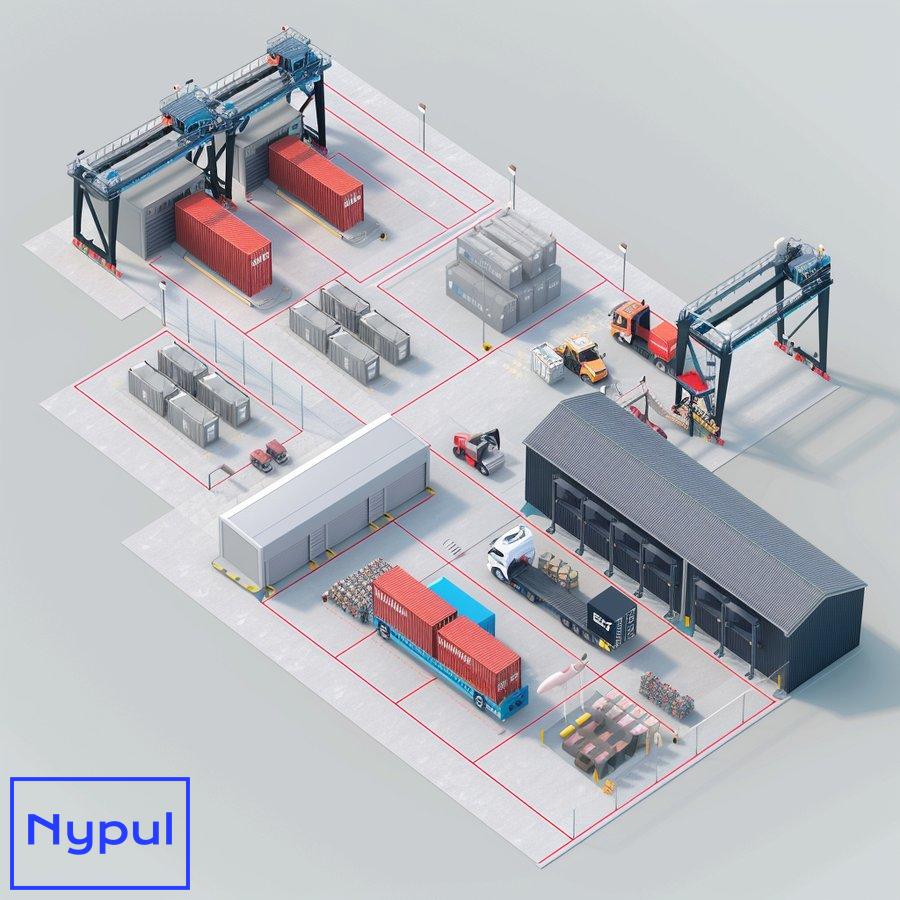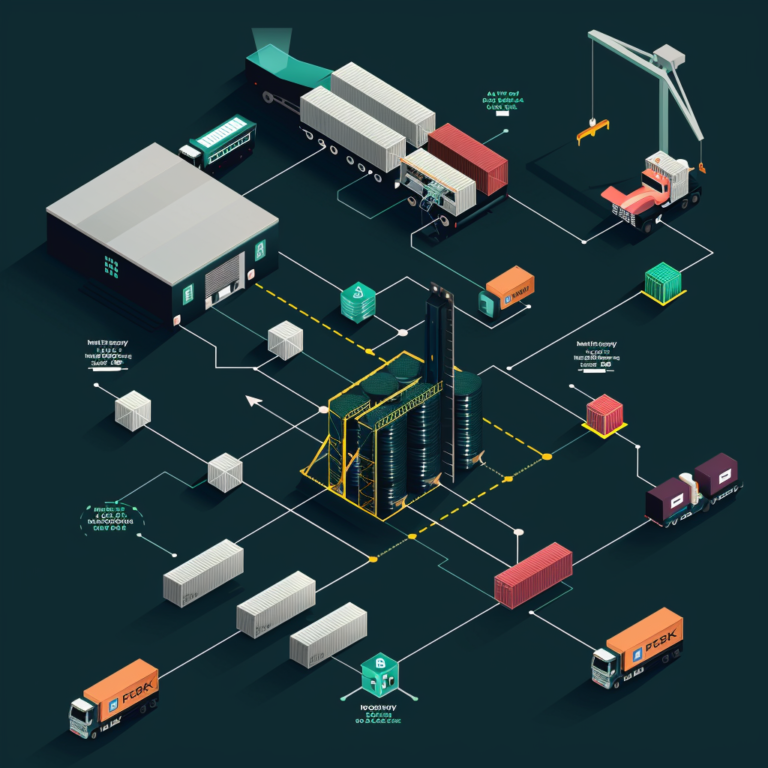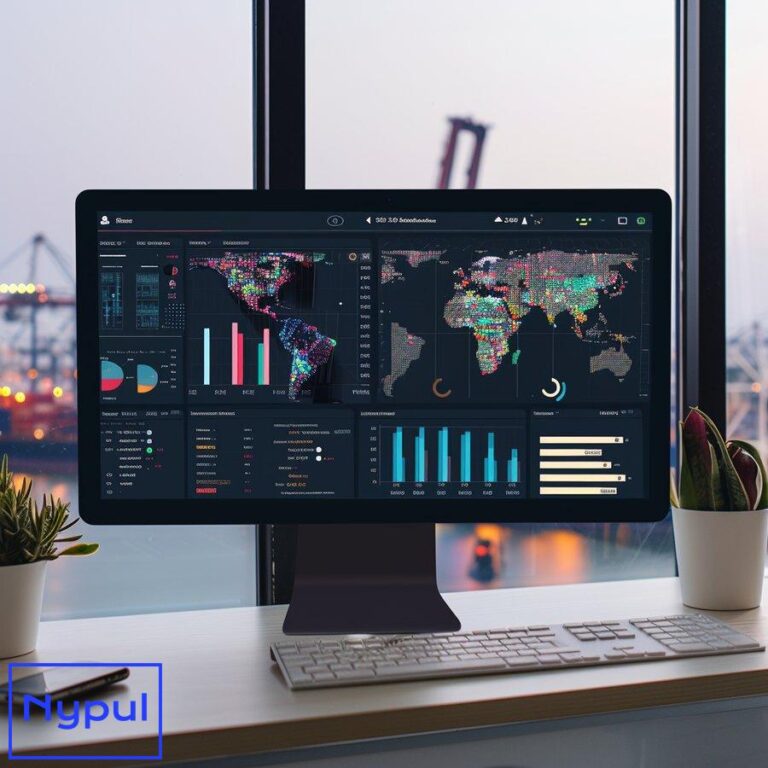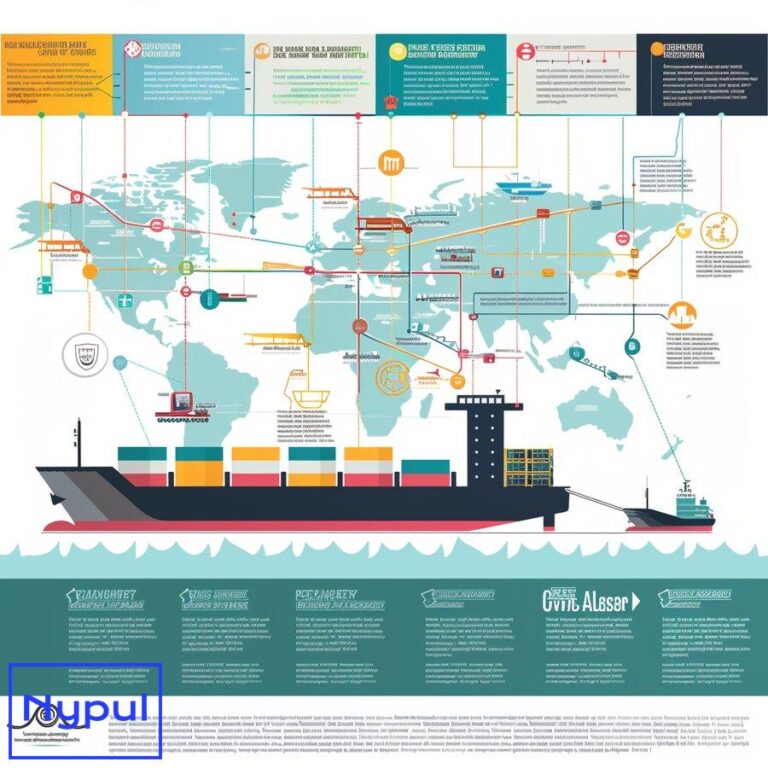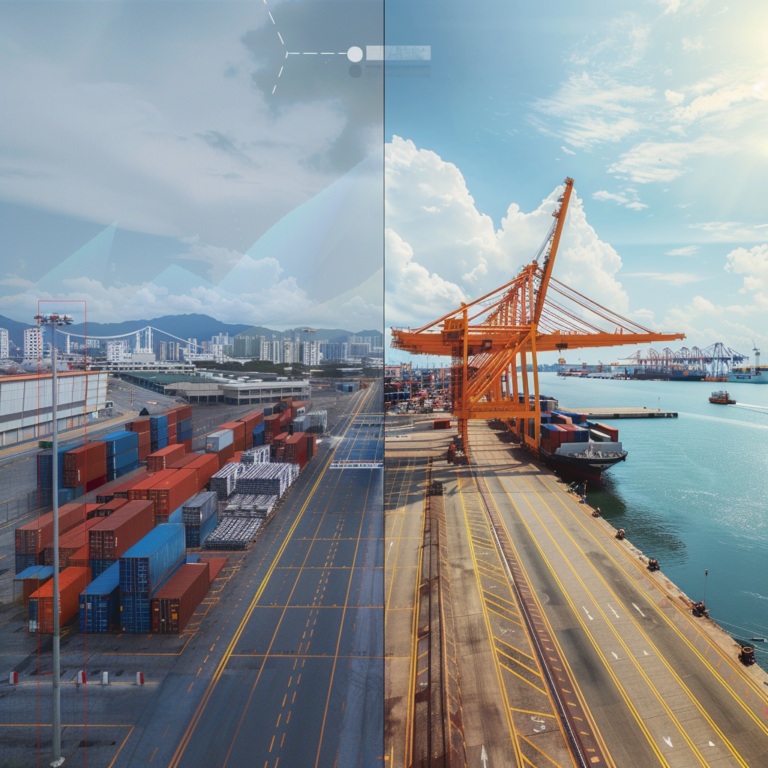What Is Empty Container Handling
Empty container handling refers to the process of managing, storing, transporting, and repositioning shipping containers that are not currently carrying cargo. This crucial aspect of logistics involves coordinating the movement of vacant containers between ports, depots, and customer locations to ensure their availability for future shipments.
The container shipping industry relies heavily on the efficient handling of empty containers to maintain smooth operations and minimize costs. Empty container handling encompasses several key activities:
Container storage: Empty containers are stored at designated facilities such as container yards or depots when not in use. These storage areas serve as temporary holding locations until the containers are needed for upcoming shipments.
Container inspection and maintenance: Before being redeployed, empty containers undergo thorough inspections to assess their condition. Any necessary repairs or cleaning are performed to ensure the containers meet safety and quality standards.
Container repositioning: This involves moving empty containers from areas with surplus inventory to locations experiencing high demand. Repositioning helps balance container availability across different regions and ports.
Container tracking: Logistics providers use various tracking systems to monitor the location and status of empty containers throughout the supply chain. This visibility enables better decision-making and resource allocation.
Container leasing and interchange: Empty containers may be leased or exchanged between shipping lines or logistics providers to optimize utilization and meet fluctuating demand.
The complexity of empty container handling becomes apparent when considering the scale of global trade. With millions of containers in circulation worldwide, efficiently managing these assets presents significant challenges and opportunities for improvement.
To illustrate the magnitude of empty container movements, consider the following table showcasing the estimated annual empty container handling volumes at some of the world’s busiest ports:
| Port | Annual Empty Container Handling Volume (TEUs) |
|---|---|
| Shanghai, China | 10.5 million |
| Singapore | 8.7 million |
| Rotterdam, Netherlands | 4.2 million |
| Los Angeles/Long Beach, USA | 3.8 million |
| Hong Kong | 3.5 million |
These figures underscore the importance of effective empty container handling strategies in maintaining the efficiency of global supply chains. As we delve deeper into this topic, we’ll explore the various aspects that make empty container handling a critical component of modern logistics operations.
Why is empty container handling important in logistics?
Empty container handling plays a pivotal role in the logistics industry, serving as a linchpin for efficient global trade. Its importance stems from several key factors that directly impact the overall performance and cost-effectiveness of supply chain operations.
Balancing global trade flows
One of the primary reasons empty container handling is crucial is its role in balancing global trade flows. Trade imbalances between regions often result in a surplus of containers in import-heavy areas and shortages in export-oriented locations. Effective empty container handling ensures that containers are repositioned to meet demand, preventing bottlenecks and maintaining the smooth flow of goods worldwide.
Cost optimization
Empty container handling significantly influences logistics costs. Inefficient management of empty containers can lead to:
Increased storage expenses: Accumulation of empty containers in surplus areas incurs storage fees at ports and depots.
Higher transportation costs: Unnecessary movement of empty containers results in additional fuel consumption and transportation expenses.
Lost revenue opportunities: Inability to provide containers in high-demand areas can lead to missed business opportunities and dissatisfied customers.
By optimizing empty container handling processes, logistics providers can substantially reduce these costs and improve their bottom line.
Asset utilization
Containers represent significant investments for shipping lines and logistics companies. Efficient empty container handling ensures maximum utilization of these assets, reducing idle time and improving return on investment. This is particularly important given the high costs associated with purchasing and maintaining container fleets.
Environmental impact
Proper management of empty containers contributes to reducing the environmental footprint of logistics operations. By minimizing unnecessary movements and optimizing transportation routes, companies can decrease fuel consumption and associated carbon emissions.
Supply chain resilience
Empty container handling plays a crucial role in building supply chain resilience. The ability to quickly reposition containers in response to market fluctuations, natural disasters, or other disruptions enables logistics providers to maintain service continuity and meet customer demands even in challenging circumstances.
Customer satisfaction
Efficient empty container handling directly impacts customer satisfaction. By ensuring container availability in the right place at the right time, logistics providers can offer reliable service to their clients, meeting shipping deadlines and maintaining consistent supply chain performance.
To illustrate the impact of efficient empty container handling on logistics performance, consider the following comparison table:
| Metric | Inefficient Handling | Efficient Handling |
|---|---|---|
| Container turnaround time | 45 days | 30 days |
| Empty container storage costs | $100 per container per day | $50 per container per day |
| Container utilization rate | 65% | 85% |
| CO2 emissions from repositioning | 500,000 tons annually | 300,000 tons annually |
| Customer satisfaction score | 70% | 90% |
This comparison demonstrates the tangible benefits of prioritizing efficient empty container handling in logistics operations. By reducing turnaround times, lowering storage costs, improving utilization rates, and decreasing environmental impact, companies can significantly enhance their overall performance and customer satisfaction levels.
As the logistics industry continues to evolve, the importance of empty container handling will only grow. With increasing global trade volumes and the need for more agile and resilient supply chains, mastering the art of empty container management will be a key differentiator for successful logistics providers in the years to come.
How do different types of empty container handling operations work?
Empty container handling operations encompass a variety of processes and strategies designed to efficiently manage the flow of vacant containers throughout the supply chain. These operations can be categorized into several distinct types, each serving a specific purpose in the overall container management ecosystem.

Depot operations
Container depots serve as central hubs for empty container handling. These facilities play a crucial role in storing, maintaining, and redistributing empty containers. Key depot operations include:
Container inspection: Upon arrival at the depot, containers undergo thorough inspections to assess their condition. This process involves checking for structural damage, cleanliness, and compliance with safety standards.
Cleaning and repairs: Containers that fail inspection are cleaned, repaired, or refurbished as necessary. This ensures that all containers leaving the depot meet quality standards for future use.
Storage: Depots provide secure storage for empty containers, organizing them based on size, type, and ownership to facilitate easy retrieval when needed.
Inventory management: Sophisticated inventory systems track the status, location, and availability of containers within the depot, enabling efficient allocation and planning.
Port operations
Ports are critical nodes in the empty container handling network, facilitating the exchange of containers between land and sea transportation. Port operations for empty containers include:
Container stacking: Empty containers are stacked in designated areas within the port, optimizing space utilization and facilitating quick access for loading onto vessels or trucks.
Intermodal transfers: Ports coordinate the transfer of empty containers between different modes of transportation, such as from ships to trucks or rail cars.
Customs clearance: Empty containers may require customs clearance when moving across international borders, a process managed by port authorities in collaboration with customs officials.
Repositioning operations
Repositioning is a fundamental aspect of empty container handling, involving the strategic movement of containers from areas of surplus to areas of demand. This process includes:
Domestic repositioning: Moving empty containers within a country or region to balance local supply and demand.
International repositioning: Transporting empty containers across international borders to address global imbalances in container availability.
Interline agreements: Collaboration between shipping lines to share empty container capacity, reducing the need for long-distance repositioning.
Container leasing operations
Container leasing provides flexibility in managing empty container inventories. These operations involve:
Short-term leasing: Renting containers for brief periods to address temporary shortages or peak demand.
Long-term leasing: Securing containers for extended periods to supplement owned fleets and manage long-term capacity needs.
Sale and leaseback: Selling owned containers to leasing companies and then leasing them back, freeing up capital while maintaining operational capacity.
Inland container depot (ICD) operations
ICDs, also known as dry ports, serve as inland extensions of seaports, facilitating empty container handling away from congested coastal areas. ICD operations include:
Container stuffing and destuffing: Loading and unloading cargo into/from containers at inland locations, reducing the need for these activities at seaports.
Customs clearance: Performing customs procedures for both full and empty containers, streamlining the import/export process.
Intermodal connectivity: Providing connections between road, rail, and sometimes air transportation for efficient container movement.
To illustrate the relative importance and characteristics of these different types of empty container handling operations, consider the following comparison table:
| Operation Type | Primary Function | Key Advantages | Challenges |
|---|---|---|---|
| Depot Operations | Storage and maintenance | Centralized management, quality control | Space constraints, handling costs |
| Port Operations | Facilitating sea-land transfers | Direct access to vessels, customs integration | Congestion, high land costs |
| Repositioning Operations | Balancing container distribution | Addressing global imbalances | High transportation costs, complexity |
| Container Leasing Operations | Flexible capacity management | Capital efficiency, scalability | Contract management, variable costs |
| ICD Operations | Inland logistics support | Reduced port congestion, faster clearance | Infrastructure requirements, coordination challenges |
Each type of empty container handling operation plays a vital role in the overall logistics ecosystem. By effectively integrating these various operations, logistics providers can create a seamless and efficient network for managing empty containers, ultimately improving service quality and reducing costs.
The success of empty container handling operations relies heavily on coordination, advanced planning, and the use of technology to optimize processes. As we explore further sections, we’ll delve into the equipment and technologies that support these operations and the strategies companies employ to enhance their empty container management capabilities.
What equipment and technologies are used in empty container handling?

The efficient handling of empty containers relies on a combination of specialized equipment and advanced technologies. These tools and systems work in tandem to streamline operations, improve accuracy, and enhance overall productivity in empty container management.
Handling equipment
Reach stackers: These versatile machines are capable of stacking and moving containers quickly and efficiently. They are particularly useful in smaller terminals and depots where space is limited.
Empty container handlers: Specifically designed for handling empty containers, these machines can lift and stack containers higher than reach stackers, maximizing storage capacity in container yards.
Forklifts: Used for moving empty containers shorter distances within depots or warehouses. Specialized attachments allow forklifts to handle various container sizes.
Gantry cranes: Large, rail-mounted cranes used in ports and large container yards for stacking and moving containers. They can handle both empty and full containers with high efficiency.
Straddle carriers: These machines can lift and transport containers over short distances, straddling a single row of containers. They offer flexibility in container yard operations.
Container chassis and trailers: Used for road transportation of empty containers between ports, depots, and customer locations.
Tracking and identification technologies
RFID (Radio-Frequency Identification): RFID tags attached to containers enable real-time tracking and automated data collection as containers move through the supply chain.
GPS tracking: GPS devices installed on containers or transport vehicles provide precise location data, enhancing visibility and enabling better route planning.
Optical Character Recognition (OCR): OCR systems automatically read and record container numbers, streamlining gate operations and reducing manual data entry errors.
Barcode systems: Barcodes affixed to containers facilitate quick scanning and identification during various handling processes.
Management software and systems
Container Terminal Operating Systems (TOS): Comprehensive software solutions that manage all aspects of container terminal operations, including empty container handling.
Yard Management Systems (YMS): Specialized software for optimizing container yard operations, including stacking, retrieval, and inventory management.
Empty container repositioning platforms: Cloud-based solutions that facilitate the exchange of empty containers between different logistics providers, optimizing utilization and reducing repositioning costs.
Blockchain technology: Emerging blockchain applications in container logistics aim to improve transparency, traceability, and security in empty container handling processes.
Artificial Intelligence and Machine Learning
Predictive analytics: AI-powered systems analyze historical data and market trends to forecast container demand and optimize repositioning strategies.
Automated planning and optimization: Machine learning algorithms help determine the most efficient container stacking arrangements and movement patterns within yards and depots.
Robotics and automation
Automated Guided Vehicles (AGVs): Self-driving vehicles used in ports and large container yards to transport containers between stacking areas and loading/unloading points.
Automated Stacking Cranes (ASCs): Robotic cranes that can operate without human intervention, efficiently stacking and retrieving containers in yard blocks.
Drone technology: Emerging applications of drones for container yard inspections and inventory management.
Communication and connectivity
Internet of Things (IoT) sensors: IoT devices attached to containers or handling equipment provide real-time data on location, condition, and environmental factors.
5G networks: High-speed, low-latency 5G connectivity enables real-time data exchange and remote operation of handling equipment.
Cloud computing: Cloud-based systems facilitate data sharing and collaboration between different stakeholders in the empty container handling process.
To illustrate the impact of these technologies on empty container handling operations, consider the following comparison table:
| Technology | Primary Function | Key Benefits | Implementation Challenges |
|---|---|---|---|
| RFID/GPS Tracking | Real-time container location | Improved visibility, reduced loss | Initial investment, data management |
| AI/ML Analytics | Demand forecasting, optimization | Better decision-making, cost reduction | Data quality, algorithm complexity |
| Automated Equipment (AGVs, ASCs) | Container movement and stacking | Increased efficiency, 24/7 operations | High capital costs, integration with existing systems |
| Blockchain | Data security, transaction tracking | Enhanced transparency, reduced paperwork | Industry-wide adoption, standardization |
| IoT Sensors | Real-time condition monitoring | Proactive maintenance, quality control | Sensor reliability, data overload |
The integration of these various equipment and technologies creates a powerful ecosystem for empty container handling. By leveraging these tools, logistics providers can significantly enhance their operational efficiency, reduce costs, and improve service quality.
As technology continues to evolve, we can expect further innovations in empty container handling. Emerging technologies such as autonomous vehicles, advanced AI applications, and even more sophisticated IoT solutions are likely to shape the future of this critical aspect of logistics operations.
The key to success lies in selecting the right combination of equipment and technologies that align with specific operational needs and scale. Companies must carefully evaluate their requirements, consider the potential return on investment, and develop a strategic implementation plan to fully leverage these advanced tools in their empty container handling processes.
What are the economic implications of empty container handling?
Empty container handling has significant economic implications for the logistics industry and global trade as a whole. Understanding these implications is crucial for businesses and policymakers to make informed decisions and develop effective strategies for managing empty containers.
Direct costs

Transportation expenses: Moving empty containers between locations incurs substantial transportation costs, including fuel, labor, and equipment usage.
Storage fees: Storing empty containers at ports, depots, or other facilities results in ongoing storage charges, which can accumulate quickly in areas with container surpluses.
Handling costs: Each time an empty container is moved, inspected, or processed, it generates handling costs associated with labor and equipment use.
Maintenance and repair: Empty containers require regular maintenance and occasional repairs to remain in serviceable condition, adding to the overall cost of ownership.
Indirect costs
Opportunity costs: When containers sit empty, they represent lost revenue opportunities. The time spent repositioning empty containers could otherwise be used for revenue-generating activities.
Inventory carrying costs: Excess empty containers tie up capital that could be invested elsewhere, resulting in inventory carrying costs for container owners.
Environmental costs: The movement of empty containers contributes to carbon emissions and other environmental impacts, which may have economic consequences in the form of carbon taxes or regulatory compliance costs.
Market impacts
Freight rate fluctuations: Imbalances in empty container availability can influence freight rates. Shortages in certain regions may drive up rates, while surpluses can lead to rate reductions.
Trade imbalances: The need for empty container repositioning is often a symptom of trade imbalances between regions, which can have broader economic implications for countries and industries.
Competitive advantage: Companies that efficiently manage their empty container logistics can gain a competitive edge through lower costs and improved service reliability.
Industry-wide effects
Asset utilization: Efficient empty container handling improves overall asset utilization in the shipping industry, potentially reducing the need for new container purchases and optimizing fleet sizes.
Supply chain resilience: Effective management of empty containers contributes to supply chain resilience, reducing disruptions and associated economic losses.
Innovation drivers: The economic challenges posed by empty container handling drive innovation in logistics technologies and practices, potentially leading to broader industry advancements.
Macroeconomic considerations
Global trade facilitation: Smooth empty container logistics is essential for facilitating global trade, impacting overall economic growth and development.
Port and infrastructure investments: The need to handle large volumes of empty containers influences decisions on port expansions and infrastructure investments.
Labor market effects: Empty container handling operationsLabor market effects
Empty container handling operations significantly impact the labor market within the logistics sector. As companies seek to optimize their processes, they may require a workforce skilled in operating advanced technologies and equipment. This demand can lead to:
-
Job creation: The growth of empty container handling operations can create new job opportunities in various areas, including equipment operation, maintenance, and logistics management.
-
Skill development: As the industry adopts more sophisticated technologies, there is an increasing need for training programs that equip workers with the necessary skills to handle advanced equipment and software.
-
Wage fluctuations: The demand for skilled labor can drive wage increases in the logistics sector, particularly for positions that require specialized knowledge of container handling technologies.
To summarize the economic implications of empty container handling, consider the following table:
| Economic Aspect | Direct Costs | Indirect Costs | Market Impacts | Industry-wide Effects |
|---|---|---|---|---|
| Transportation | High | Opportunity costs | Freight rate fluctuations | Improved asset utilization |
| Storage | Significant | Inventory carrying costs | Trade imbalances | Supply chain resilience |
| Handling | Ongoing | Environmental costs | Competitive advantage | Innovation drivers |
| Maintenance | Regular | |||
| Labor | Job creation, skill development |
The economic implications of empty container handling are multifaceted, affecting not only individual companies but also the broader logistics industry and global trade dynamics. By understanding these implications, stakeholders can develop strategies to mitigate costs, enhance efficiency, and foster innovation in empty container management.
How can companies optimize their empty container management strategies?
Optimizing empty container management strategies is essential for logistics companies aiming to enhance efficiency, reduce costs, and improve service quality. A well-structured approach involves several key strategies that can be tailored to meet specific operational needs.
Data-driven decision-making
Leveraging data analytics is crucial for optimizing empty container management. Companies can utilize historical data and real-time information to:
-
Forecast demand: Analyzing trends in shipping volumes and container usage can help predict future demand for empty containers, allowing companies to plan repositioning and storage accordingly.
-
Identify inefficiencies: Data analysis can reveal bottlenecks and inefficiencies in the empty container handling process, enabling targeted improvements.
-
Optimize routes: Advanced routing algorithms can help determine the most efficient transportation routes for repositioning empty containers, minimizing costs and transit times.
Collaboration and partnerships
Building strong relationships with other stakeholders in the supply chain can enhance empty container management. Companies can:
-
Engage in interline agreements: Collaborating with other shipping lines to share empty container capacity can reduce the need for long-distance repositioning and improve overall efficiency.
-
Participate in industry networks: Joining industry associations and networks can facilitate knowledge sharing and best practices in empty container management.
-
Leverage third-party logistics providers: Partnering with third-party logistics companies can provide access to specialized expertise and resources for managing empty containers effectively.
Technology integration
Investing in advanced technologies can significantly enhance empty container management capabilities. Companies should consider:
-
Implementing container tracking systems: Utilizing RFID, GPS, and barcode technologies can improve visibility and tracking of empty containers throughout the supply chain.
-
Adopting management software: Implementing Container Terminal Operating Systems (TOS) and Yard Management Systems (YMS) can streamline operations and enhance inventory management.
-
Exploring automation: Investing in automated handling equipment and robotics can improve efficiency and reduce labor costs in empty container operations.
Process standardization
Standardizing processes across empty container handling operations can lead to improved efficiency and consistency. Companies should:
-
Develop standard operating procedures (SOPs): Creating clear SOPs for handling empty containers can ensure that all employees follow best practices and minimize errors.
-
Implement training programs: Regular training sessions can help employees stay updated on standard processes and new technologies, enhancing overall operational performance.
-
Conduct regular audits: Periodic audits of empty container handling processes can identify areas for improvement and ensure compliance with established procedures.
Sustainability initiatives
Incorporating sustainability into empty container management strategies can yield both economic and environmental benefits. Companies can:
-
Optimize transportation routes: By minimizing empty container movements and optimizing routes, companies can reduce fuel consumption and associated carbon emissions.
-
Invest in eco-friendly technologies: Utilizing energy-efficient equipment and exploring alternative fuels can help reduce the environmental impact of empty container handling operations.
-
Engage in recycling and reuse: Implementing recycling programs for damaged containers and promoting the reuse of containers can further enhance sustainability efforts.
To summarize the strategies for optimizing empty container management, consider the following table:
| Strategy | Key Actions | Benefits |
|---|---|---|
| Data-driven decision-making | Forecast demand, identify inefficiencies, optimize routes | Improved efficiency, reduced costs |
| Collaboration and partnerships | Engage in interline agreements, participate in industry networks | Enhanced resource sharing, knowledge exchange |
| Technology integration | Implement tracking systems, adopt management software, explore automation | Increased visibility, streamlined operations |
| Process standardization | Develop SOPs, implement training programs, conduct audits | Consistency, reduced errors |
| Sustainability initiatives | Optimize transportation routes, invest in eco-friendly technologies | Reduced environmental impact, cost savings |
By implementing these strategies, companies can significantly enhance their empty container management capabilities, leading to improved operational efficiency and a stronger competitive position in the logistics market.
What challenges do businesses face in empty container handling?
Despite the importance of effective empty container handling, businesses encounter several challenges that can hinder their operations. Understanding these challenges is crucial for developing strategies to overcome them and improve overall efficiency.
Trade imbalances
![]()
Global trade imbalances can create significant challenges in empty container handling. When certain regions experience high import volumes while others have high export volumes, empty containers may accumulate in areas with low demand. This can lead to:
-
Increased repositioning costs: Companies may incur substantial transportation expenses to move empty containers from surplus areas to regions with demand.
-
Inefficient asset utilization: Excess empty containers in one location can result in underutilization of assets, impacting overall operational efficiency.
Congestion at ports and depots
Port and depot congestion can severely impact empty container handling operations. High volumes of containers can lead to:
-
Delays in processing: Congestion can slow down the movement and processing of empty containers, resulting in longer turnaround times.
-
Increased storage costs: When containers cannot be processed quickly, they may accumulate in storage areas, leading to higher storage fees.
Regulatory compliance
Navigating regulatory requirements for empty container handling can pose challenges for businesses. Companies must ensure compliance with various regulations, including:
-
Customs regulations: Empty containers may require customs clearance when moving across international borders, adding complexity to the handling process.
-
Environmental regulations: Compliance with environmental regulations related to emissions and waste management can increase operational costs and require additional resources.
Equipment and technology limitations
The effectiveness of empty container handling operations is often influenced by the availability and condition of equipment and technology. Challenges in this area can include:
-
Aging equipment: Older handling equipment may be less efficient and more prone to breakdowns, leading to increased maintenance costs and downtime.
-
Integration issues: Implementing new technologies can be challenging, particularly if existing systems are outdated or incompatible with newer solutions.
Labor shortages and training
The logistics industry frequently faces labor shortages, particularly for skilled positions related to empty container handling. This can result in:
-
Increased labor costs: Competition for skilled workers can drive up wages, impacting overall operational costs.
-
Training challenges: Ensuring that employees are adequately trained to operate advanced equipment and technologies can be resource-intensive and time-consuming.
Environmental concerns
As environmental regulations become more stringent, companies must address the environmental impact of their empty container handling operations. Challenges include:
-
Carbon emissions: The transportation and handling of empty containers contribute to carbon emissions, which can lead to regulatory compliance costs and reputational risks.
-
Waste management: Proper disposal and recycling of damaged or obsolete containers require additional resources and planning.
To summarize the challenges faced by businesses in empty container handling, consider the following table:
| Challenge | Impact | Potential Solutions |
|---|---|---|
| Trade imbalances | Increased repositioning costs, inefficient asset utilization | Develop interline agreements, optimize repositioning strategies |
| Congestion at ports and depots | Delays in processing, increased storage costs | Invest in infrastructure, enhance operational efficiency |
| Regulatory compliance | Increased operational costs, resource allocation | Stay updated on regulations, implement compliance programs |
| Equipment and technology limitations | Downtime, higher maintenance costs | Invest in modern equipment, ensure technology compatibility |
| Labor shortages and training | Increased labor costs, training challenges | Enhance recruitment efforts, develop training programs |
| Environmental concerns | Regulatory compliance costs, reputational risks | Implement sustainability initiatives, explore eco-friendly technologies |
By recognizing and addressing these challenges, businesses can improve their empty container handling operations, leading to enhanced efficiency and reduced costs.
How do successful companies implement effective empty container handling?
Successful companies in the logistics industry employ a variety of best practices to implement effective empty container handling strategies. These practices focus on optimizing processes, leveraging technology, and fostering collaboration to enhance overall efficiency and service quality.
Establishing clear objectives
Successful companies begin by establishing clear objectives for their empty container handling operations. This involves:
-
Defining key performance indicators (KPIs): Identifying specific metrics to measure success, such as turnaround times, storage costs, and container utilization rates.
-
Setting targets: Establishing achievable targets for each KPI to guide decision-making and operational improvements.
Investing in technology and automation
Leading companies recognize the importance of technology in optimizing empty container handling. They invest in:
-
Advanced tracking systems: Implementing RFID, GPS, and barcode technologies to enhance visibility and streamline operations.
-
Automated handling equipment: Utilizing automated guided vehicles (AGVs) and automated stacking cranes (ASCs) to improve efficiency and reduce labor costs.
-
Data analytics tools: Leveraging data analytics to forecast demand, optimize routes, and identify inefficiencies in the handling process.
Fostering collaboration and partnerships
Successful companies prioritize collaboration with stakeholders across the supply chain. They:
-
Engage in interline agreements: Partnering with other shipping lines to share empty container capacity and reduce repositioning costs.
-
Collaborate with third-party logistics providers: Leveraging the expertise of third-party providers to enhance operational capabilities and improve service quality.
-
Participate in industry associations: Joining industry groups to share best practices and stay informed about emerging trends and technologies.
Implementing process improvements
Continuous process improvement is a hallmark of successful companies. They:
-
Adopt lean principles: Implementing lean methodologies to eliminate waste and streamline empty container handling processes.
-
Standardize operating procedures: Developing clear standard operating procedures (SOPs) to ensure consistency and minimize errors.
-
Conduct regular audits: Performing periodic audits of empty container handling operations to identify areas for improvement and ensure compliance with established procedures.
Prioritizing sustainability
Leading companies recognize the importance of sustainability in their empty container handling strategies. They:
-
Optimize transportation routes: Minimizing empty container movements and optimizing routes to reduce fuel consumption and emissions.
-
Invest in eco-friendly technologies: Exploring energy-efficient equipment and alternative fuels to minimize the environmental impact of operations.
-
Implement recycling programs: Promoting the recycling and reuse of containers to enhance sustainability efforts.
Training and development
Successful companies invest in their workforce to ensure that employees are equipped with the skills and knowledge necessary for effective empty container handling. They:
-
Provide ongoing training: Offering regular training sessions on new technologies, equipment, and best practices to keep employees up-to-date.
-
Encourage skill development: Supporting employees in pursuing certifications and professional development opportunities related to logistics and container management.
To summarize the best practices for implementing effective empty container handling, consider the following table:
| Practice | Key Actions | Benefits |
|---|---|---|
| Establishing clear objectives | Define KPIs, set targets | Focused decision-making, measurable success |
| Investing in technology and automation | Implement tracking systems, utilize automated equipment | Enhanced efficiency, reduced labor costs |
| Fostering collaboration and partnerships | Engage in interline agreements, collaborate with third-party providers | Improved resource sharing, enhanced service quality |
| Implementing process improvements | Adopt lean principles, standardize procedures | Streamlined operations, reduced errors |
| Prioritizing sustainability | Optimize routes, invest in eco-friendly technologies | Reduced environmental impact, cost savings |
| Training and development | Provide ongoing training, encourage skill development | Skilled workforce, improved operational performance |
By adopting these best practices, companies can effectively implement empty container handling strategies that enhance operational efficiency, reduce costs, and improve service quality. As the logistics industry continues to evolve, staying ahead of trends and embracing innovation will be crucial for success in empty container management.
